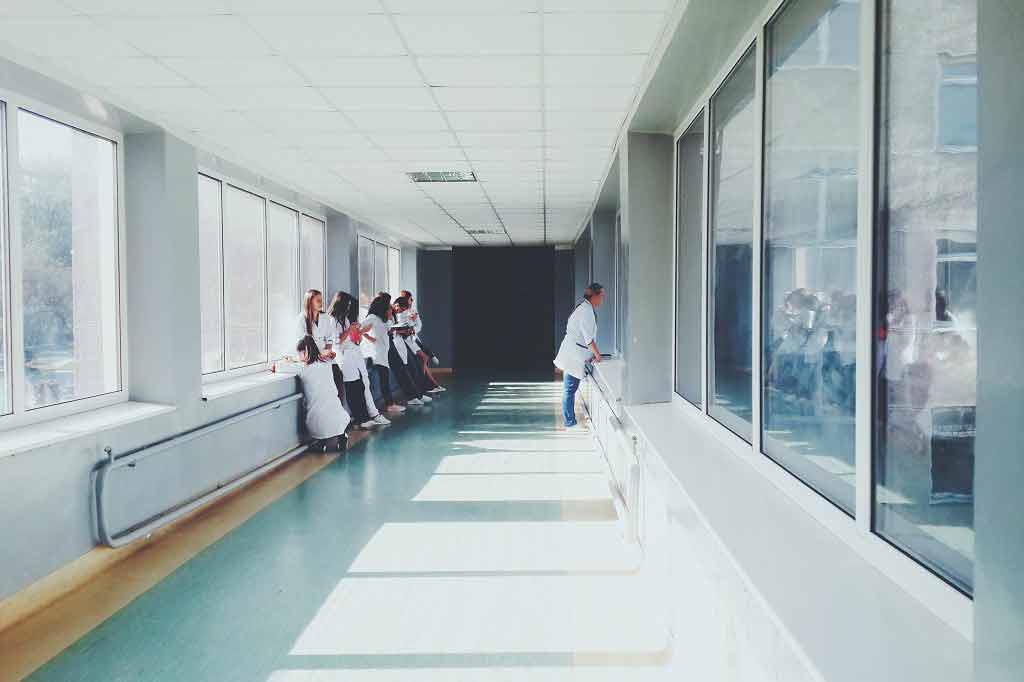Calls for GPs to offer HIV screening in high-risk areas
Medical practice
"Offering routine HIV tests to people when they register with new GP surgeries in high-risk areas is cost-effective and could save lives," The Guardian reports. The news comes from the findings of a large trial in the London Borough of Hackney…
"Offering routine HIV tests to people when they register with new GP surgeries in high-risk areas is cost-effective and could save lives," The Guardian reports.
The news comes from the findings of a large trial in the London Borough of Hackney.
Researchers wanted to see if offering HIV screening to new patients registering with GP surgeries would detect more people with the disease.
Based on the data from the trial, the researchers found screening led to HIV diagnosis in four times the number of people diagnosed without screening.
The researchers' calculations suggested that screening would provide good value for money when looking at the additional quality of life and lifespan it provided over more than 30 years.
They calculated it would cost the NHS £4 million a year to roll out the screening programme to all local authority areas with high rates of HIV.
Certain groups of people are at higher risk of contracting HIV – including men who have sex with men, and straight African men and women – and are advised to have regular tests.
If you're concerned you might have HIV, you can get tested free of charge on the NHS. Home testing kits are also available.
These days, HIV isn't usually a life-limiting condition if it's diagnosed and treated early. Read more about HIV testing.
Where did the story come from?
The study was carried out by researchers from the London School of Hygiene and Tropical Medicine, University College London, Queen Mary University of London, NHS City and Hackney, Homerton University Hospital NHS Foundation Trust, and the University of Warwick in the UK, as well as the University of British Columbia in Canada.
The research was funded by NHS City and Hackney, the UK Department of Health, and the National Institute for Health Research Collaboration for Leadership in Applied Health Research and Care.
The study was published in the peer-reviewed medical journal The Lancet HIV on an open access basis, so it's free to read online.
The UK media's coverage of the story was mostly accurate, although some of the headlines aren't specific enough.
For example, the Mail Online reported that, "HIV tests should be given to everyone who registers with a GP, an NHS-funded study has recommended".
But the study only recommends routine screening in parts of the country where there's a known prevalence of around 2 confirmed cases of HIV in every 1,000 adults.
What kind of research was this?
This cost-effectiveness study looked at the impact of GP-based screening for HIV in adults in areas where HIV rates are relatively high.
Cost-effectiveness studies look at the impact of an intervention over a specified period of time, and calculate how much these cost compared with an alternative – in this case, not providing screening.
These types of studies are useful for decision makers, who need to decide which interventions offer good value for money.
This approach is also a good way to get up-to-date information about the impact of a potential screening programme.
But like all cost-effectiveness studies, some assumptions have to be made about what will happen in the future.
It's impossible to say for sure if these assumptions will turn out to be accurate – this only emerges in the years to come.
What did the research involve?
The researchers used the results of a randomised controlled trial (RCT) in Hackney (RHIVA2) that compared HIV screening when they registered with a GP with doing nothing at all.
Forty GP surgeries took part, with half offering screening to newly registered patients and half not offering screening. Screening was carried out using a rapid finger prick test.
The trial was carried out over 28 months, and HIV diagnosis rates were recorded in the screening practices (20 practices with 44,971 new registrants) and control practices (20 practices with 38,464 new registrants).
In the screening practices, all newly registered patients were given the test as part of registration unless they specifically asked not to have it.
Costs and impacts were projected for a 50-year period. The cost of either providing or not providing GP-based screening was then estimated.
The researchers also estimated health outcomes in the borough if people were or weren't offered screening. For example, they looked at how people's HIV progressed and how this would impact their quality of life and lifespan, and how many people they would pass the infection on to.
Where possible, the researchers used information collected in the RHIVA2 trial in their cost-effectiveness modelling.
If they didn't have the information they needed, they looked for other reliable sources or made assumptions based on what we already know.
They assumed that:
- people have a long life expectancy after diagnosis because of effective treatment and care
- after diagnosis, people are less infectious as a result of anti-retroviral therapy
- after diagnosis, people permanently reduce their number of sexual partners by 25%
- HIV prevalence in Hackney would stay constant
The researchers used their cost-effectiveness model to calculate how much more the GP-based screening programme would cost.
Health professionals use a measurement known as quality adjusted life year (QALY) as part of their assessment of whether an intervention is cost-effective.
One QALY means one extra year of perfect health a person gains because of that intervention. For any intervention, researchers can calculate how much extra that intervention costs for each additional QALY it provides across the whole population.
The researchers also looked at:
- how long it would take for GP-based screening to reach this cost-effectiveness threshold
- the extra cost per death prevented over a 50-year period
- the extra cost per case of HIV prevented
What were the basic results?
Over 28 months, GP practices that screened newly registered patients identified 32 people living with HIV who hadn't been diagnosed previously, compared with 14 in the control GP practices.
The key findings were:
- The overall HIV diagnosis rate was four times higher in the screening group than control group – 0.30 per 10,000 patients per year (95% confidence interval [CI] 0.11 to 0.85) compared with 0.07 per 10,000 patients per year (95% credible interval [CrI] 0.02 to 0.20).
- The total cost of the GP-based screening intervention was estimated to be £127,724.
- The estimated average cost per HIV rapid test performed was £25.
- The average cost per additional patient newly diagnosed because of screening was £7,096.
Based on the trial's findings, other UK data and the assumptions the researchers made, they calculated that:
- It would take 33 years for screening to become cost-effective based on the commonly used UK threshold – that is, to reach an additional cost of £30,000 per QALY gained.
- Over a 40-year time period, the cost per QALY would reduce to £22,201 per QALY gained (95% credible interval, CrI, £12,662 to £132,452).
- By 50 years, cost per QALY would be well below the cost-effectiveness threshold at £16,543 per QALY gained (95% CrI £9,616 to £109,026).
Over the 40-year time period, the additional cost of screening per death prevented would be £372,207 (95% CrI £268,162 to £1,903,385), and £628?874 per HIV transmission prevented (95% CrI £434,902 to £4,740,724).
How did the researchers interpret the results?
The researchers predicted that screening for HIV in areas of the UK with a high number of new cases will be cost-effective in the medium term.
They said that, "Although anti-retroviral therapy as a prevention intervention is very effective, and treatment coverage in the UK is high, the estimated number of people living with undiagnosed HIV remains substantial and the number of people living with HIV continues to increase.
"Patients should be diagnosed and treated earlier to effect meaningful reductions in transmission, along with ensuring that for those with a negative HIV test other prevention interventions, such as condom use and pre-exposure prophylaxis, are accessible and promoted."
Conclusion
The results of this study suggest it seems to be cost-effective to screen new patients for HIV when they register at a GP practice in areas where HIV is particularly prevalent.
This conclusion is based on projections making use of a wide range of data from the UK, and making certain assumptions about HIV prevalence over time and the behaviour of people who've been newly diagnosed with HIV.
The researchers used good methods, and their recommendation to roll out screening in areas where there are high rates of HIV is consistent with current National Institute for Health and Care Excellence (NICE) guidelines.
Studies like this help decision makers decide which interventions offer good value for money.
But the drawback with these types of studies is they rely on assumptions – and it's not possible to say for certain whether these assumptions are correct.
Other points to bear in mind about this study include:
- The researchers may have over- or underestimated the cost-effectiveness of screening by assuming HIV rates in Hackney would stay the same and that people newly diagnosed with HIV would permanently change their sexual behaviours.
- Injecting drug users weren't included in the modelling because reusing needles (which carries HIV risk) is in decline in the UK and HIV is uncommon in this group. But this might vary between regions.
- The areas with similar HIV rates to Hackney the researchers suggest could potentially benefit from screening might have populations with different characteristics and sexual behaviours.
- The analyses suggest the cost-effectiveness value for screening could fall within quite a wide range, including some values that suggest screening wouldn't be cost-effective at all.
These findings are in line with current UK guidelines, giving further weight to the recommendation that these measures are adopted and promoted in areas with high rates of HIV.
If you're concerned that you may have been exposed to HIV, contact your GP. Testing is free on the NHS. Home testing kits are also available from pharmacies.
Regular testing is recommended for men who have sex with men, and also sexually active straight people from Africa.
Read more about getting an HIV test.






 Subscribe
Subscribe Ask the doctor
Ask the doctor Rate this article
Rate this article Find products
Find products








